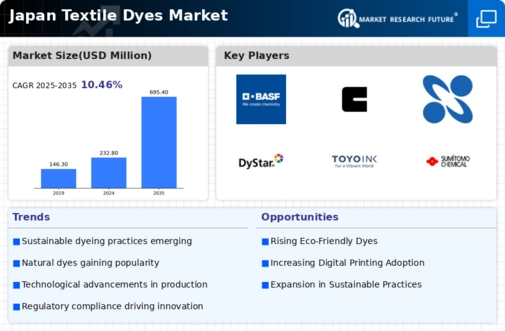The Japan Textile Dyes Market is characterized by its dynamic nature and strong competition among major players. As textile manufacturing remains an essential industry within Japan, the demand for high-quality dyes continues to grow. The market is influenced by several factors including technological advancements in dye production, sustainability practices, and consumer preferences shifting towards eco-friendly products.
Companies in this sector must navigate regulatory challenges along with meeting the evolving needs of textile manufacturers. Overall, the competitive landscape is shaped by innovation, product diversity, and strategic partnerships, which are crucial for firms aiming to establish a strong foothold in the region.
BASF has established a significant presence in the Japan Textile Dyes Market, leveraging its global expertise and commitment to innovation. The company offers a wide range of dye solutions tailored specifically for various textile applications, enhancing color strength, stability, and environmental safety.
BASF's strengths lie in its advanced research and development capabilities, allowing for the continuous introduction of innovative products that meet the stringent quality standards in Japan. The company also promotes sustainability as a core value, implementing environmentally friendly practices in its production processes.
This commitment to quality and sustainability resonates strongly with local manufacturers and consumers, giving BASF a competitive edge in the market.
Clariant has also made notable strides in the Japan Textile Dyes Market, focusing on providing high-performance dye solutions that cater to a diverse range of textile applications. The company offers a portfolio that includes reactive dyes, acid dyes, and disperse dyes designed to meet the specific needs of Japan's textile industry.
Clariant's strong market presence is bolstered by its continuous investment in technology and innovation, allowing it to adapt quickly to changing market demands. The company has demonstrated its strengths in sustainable product offerings, responding to the growing trend towards environmentally responsible manufacturing methods within Japan.
Additionally, Clariant's strategic mergers and acquisitions have further enhanced its capabilities, expanding its product lines and market access, thereby solidifying its position as a key competitor in the Japan Textile Dyes Market.




















Leave a Comment